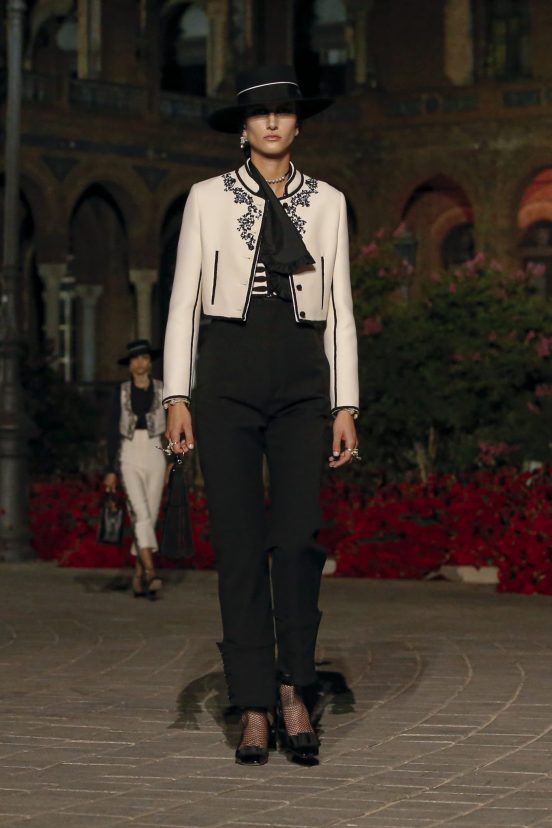Review of Dior Cruise 2023 Fashion Show
A Feast for the Senses
By Mark Wittmer
For Cruise 2023, not only did Dior creative director Maria Grazia Chiuri head to the almost mythically historic Spanish city of Seville, but she staged the show on one of its most important holidays: the Feast of Corpus Christi, also known as the Solemnity of the Most Holy Body and Blood of Christ. This advent of the important moment in the Catholic calendar – which celebrates the idea of the actual presence of Christ’s body and blood in the Eucharist – felt like a fittingly dramatic context for a collection that evocatively balanced the raptures of spiritualism with the pleasures of the flesh.
Produced by the masterful Bureau Betak and set in the city’s expansive and iconic Plaza de España, which was decked out with roses, the show opened on two spotlit, dueling tap dancers. Moments into their passionate performance, they were joined by a cadre of flamenco dancers in red dresses, who provided a scintillating backdrop to the collection, as well as an orchestra – a powerful opening that set the stage for a daringly conceived, deeply romantic, and endlessly detailed collection.
Continuing Chiuri’s commitment to celebrating local artisans and traditional craftsmanship through collaboration, the designer teamed with Seville ateliers – leatherworkers, silversmiths, embroidery houses, lacemakers – to illuminate the collection via the region’s living legacy of craft. Drawing out the connection with the timing of the Feast of Corpus Christi, she partnered in particular with craftspeople whose work is most often used in a religious context: Orfebreria Ramos, a traditional metalworking workshop that mostly specializes in producing objects such as crowns for religious statues and restoring church altars, or the Jesús Rosado atelier, which only works with gold and silver yarns, and frequently embroiders the fabrics used to dress the Madonnas in religious processions or worn for liturgical rites. Other workshops provided lace fans, an iconic emblem of the city’s señoras, or Andalucian leatherwork traditionally associated with equestrian equipment such as saddles.
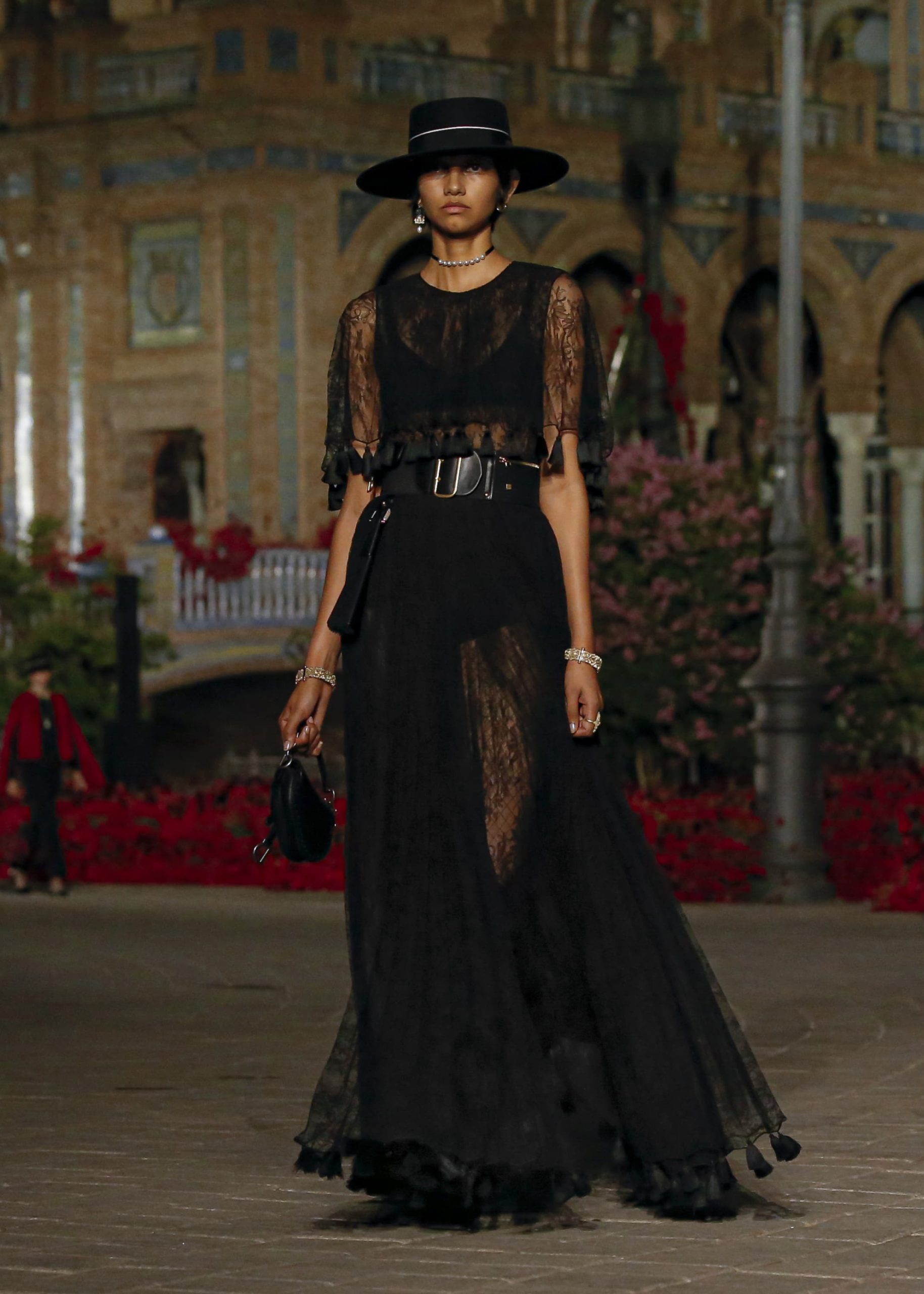
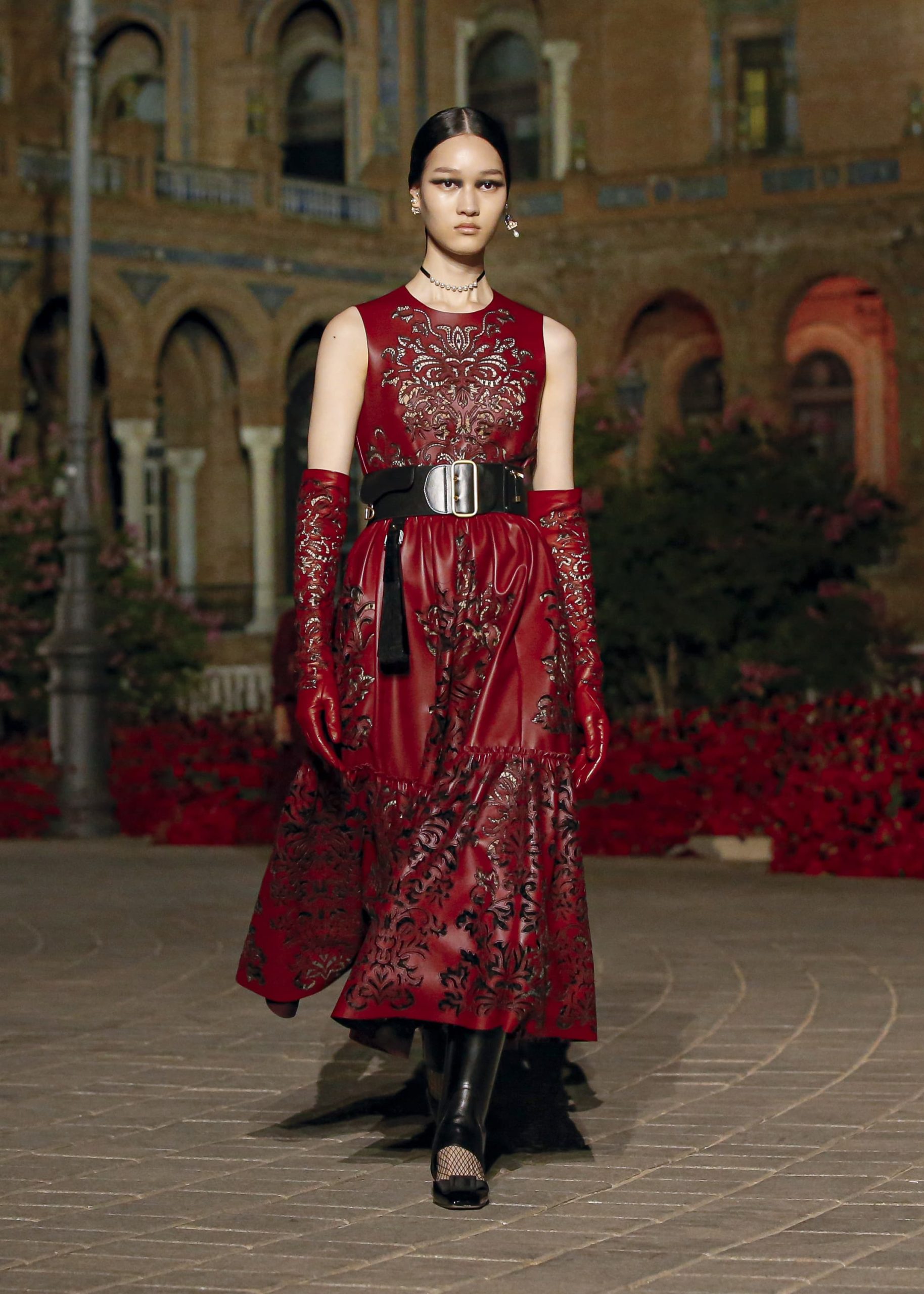
Silhouettes have some parallels to Chiuri’s favorite motifs for Dior, but for the most part the pieces feel rooted in the region’s sartorial heritage (though an idealized version of it): bolero jackets, high-collared jackets, ruffled skirts, corseted structures, mantles, mantillas, all rife with abundant and intricate detailing.
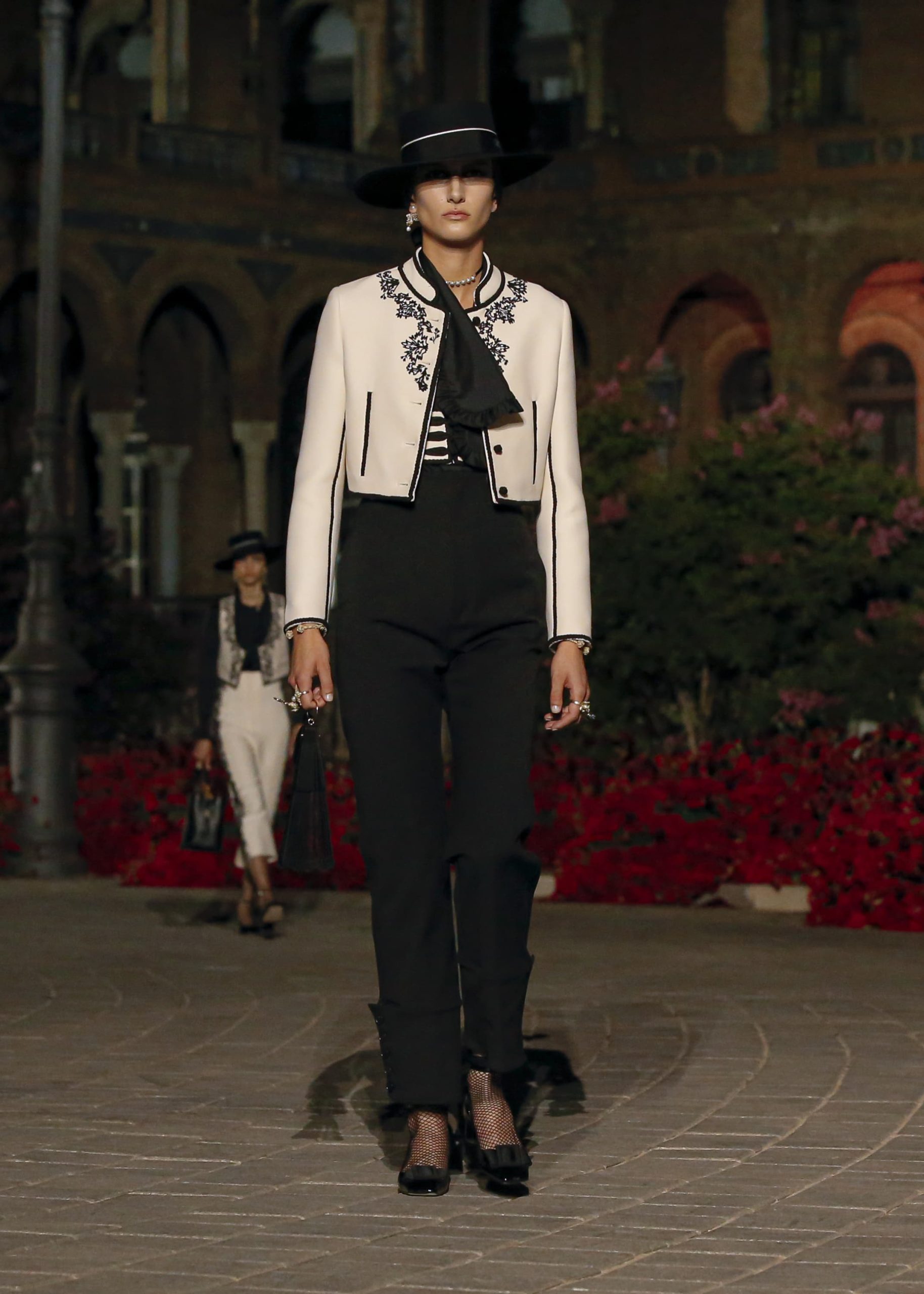
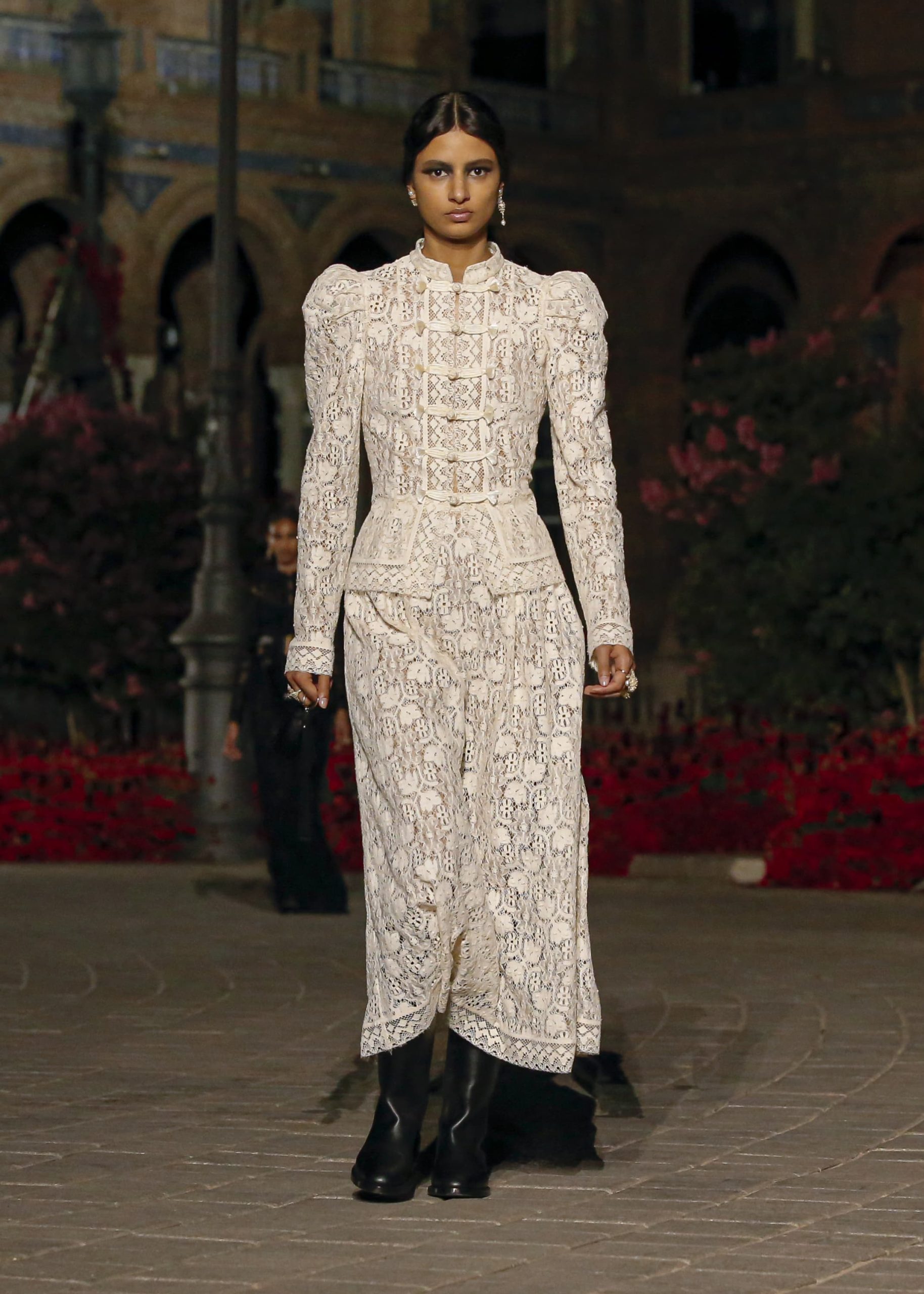
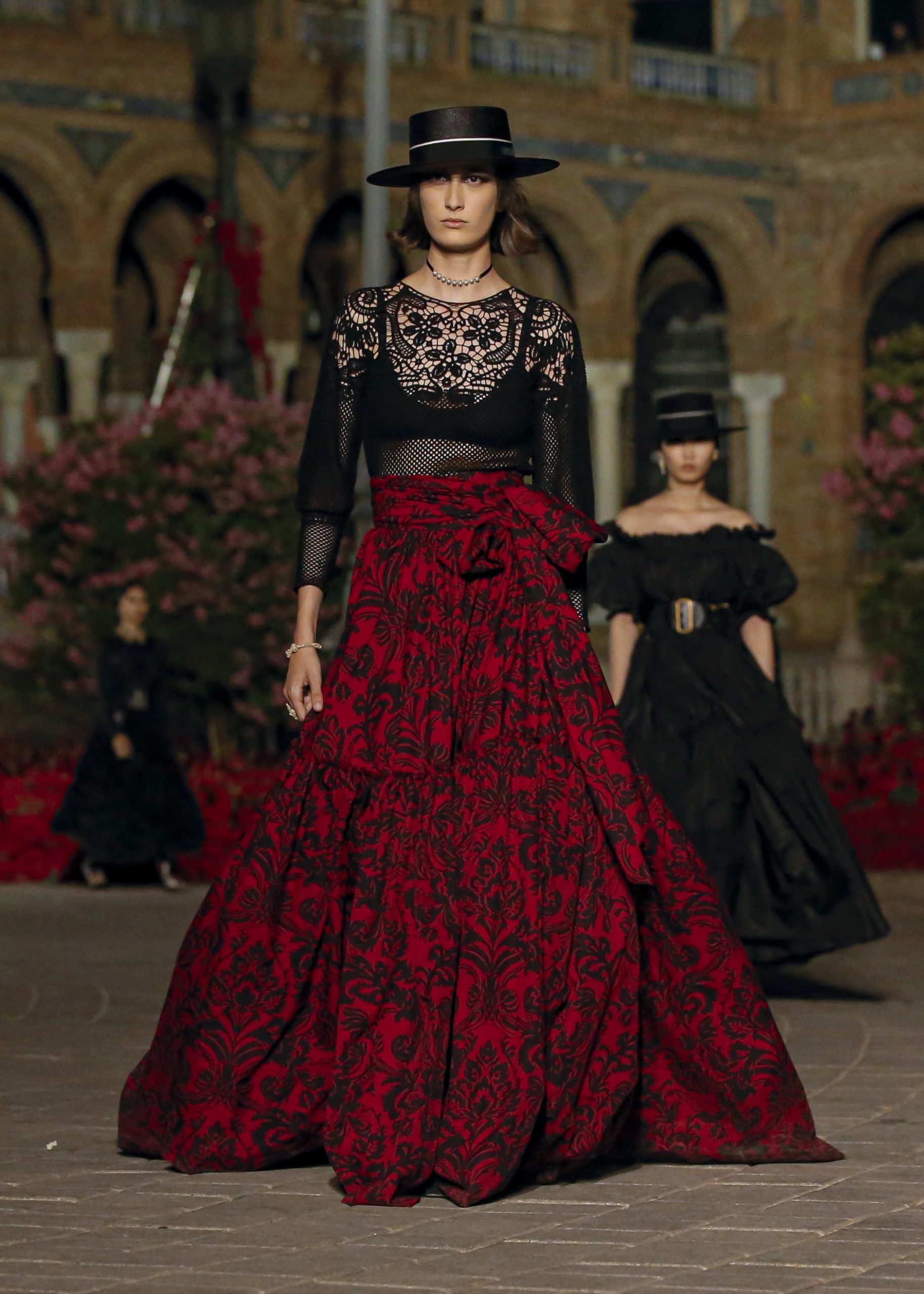
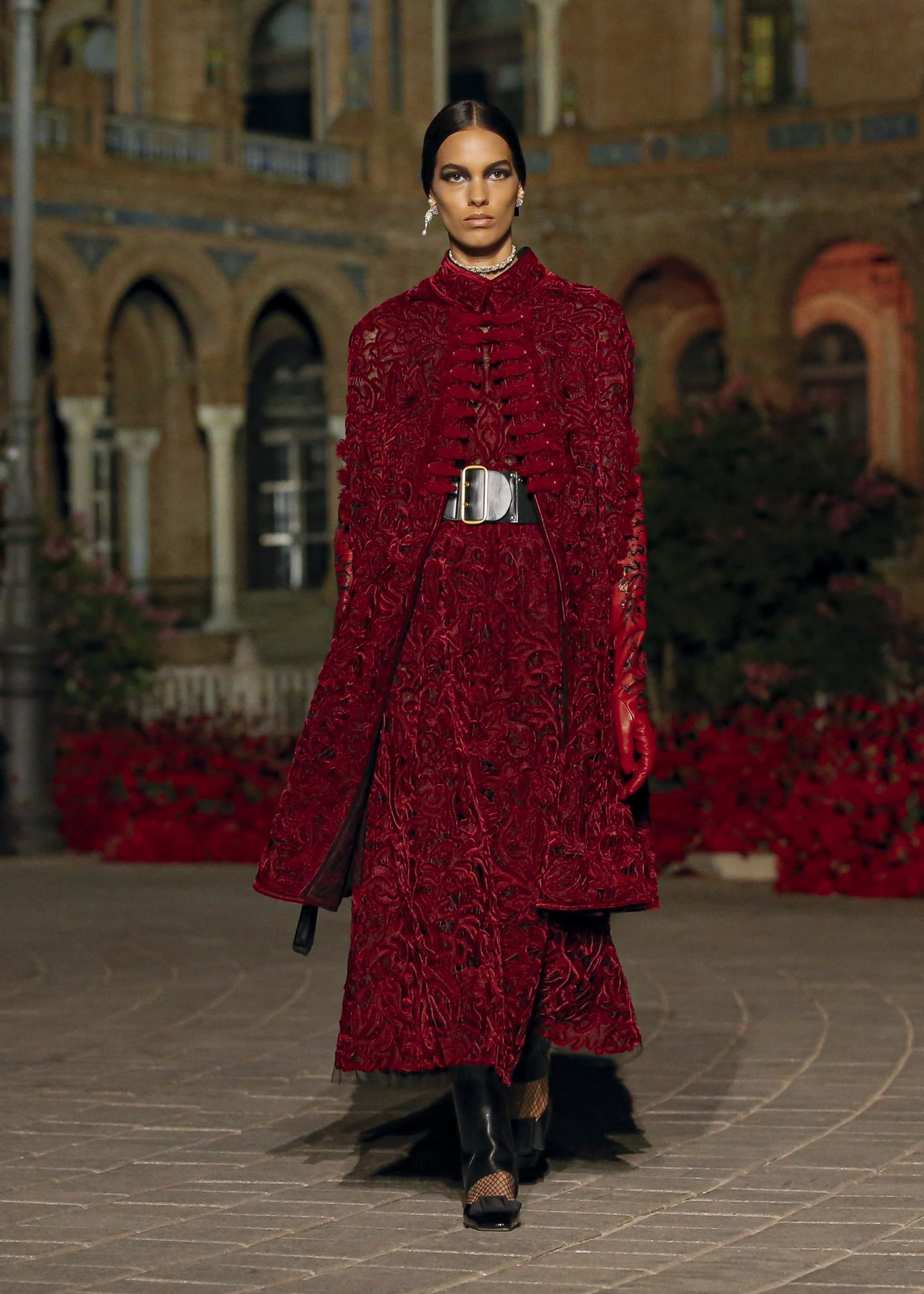
Despite the sense of non-secular and aristocratic staunchness, an undeniable romance and even sexiness is present here. Not lurid or obvious sex-appeal, but the kind of implied yet inaccessible sensuality that pertains to pasión – both its roses and its thorns. It’s not lost on Chiuri that she’s showing in Don Juan’s hometown. There is a thread of dark seduction running through the collection, of clandestine meetings in lamplit porticoes, of climbing out of a bedroom window and down the neo-baroque façade.
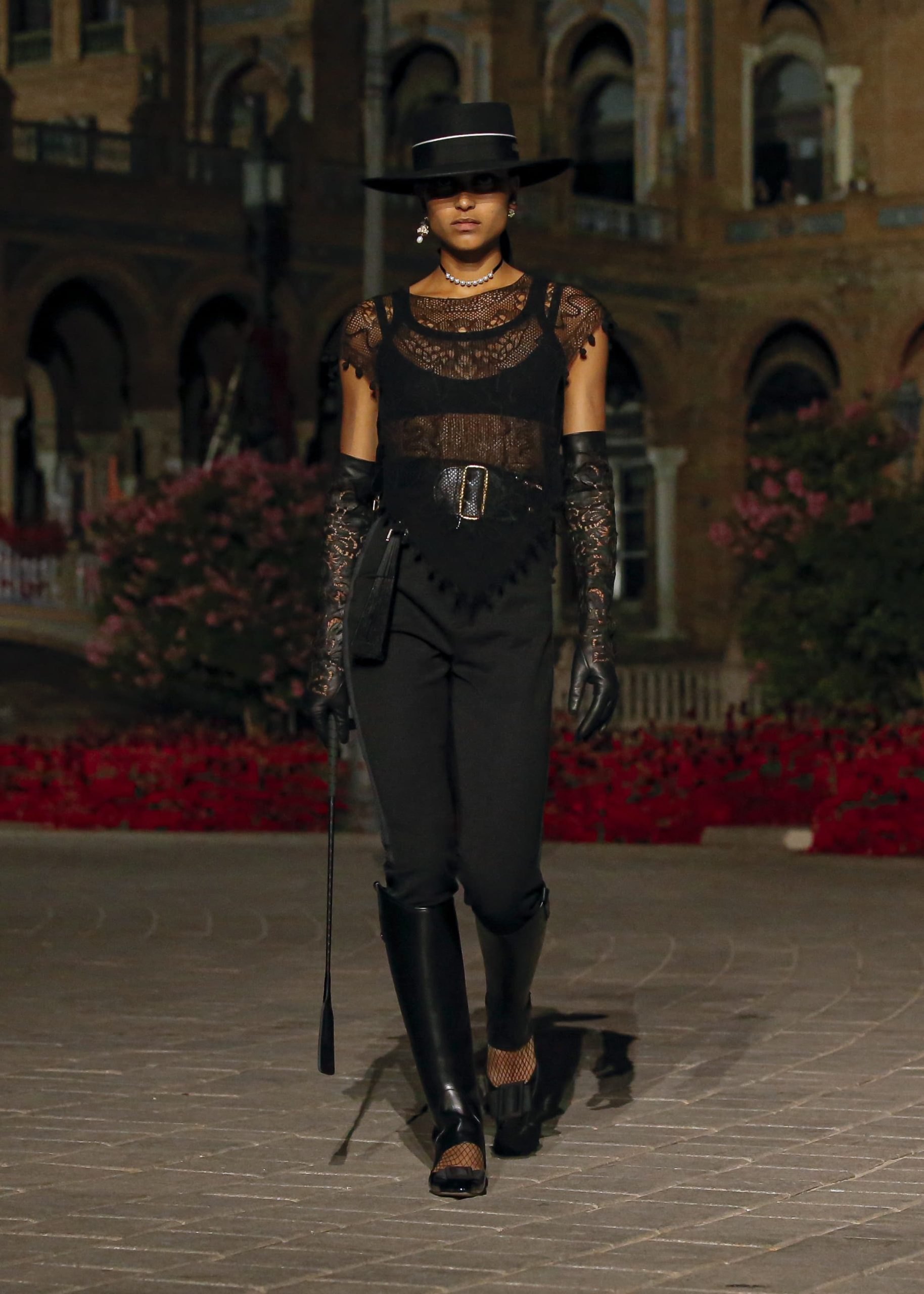
We get the sense those riding crops won’t just be used on horses, and of wider applications of leather than mere equestrianism. Under all those high collars, lace, clasps, low brims, a confidence in taking and touching. Catholicism is, after all, very fleshy. Nuns need something to feel guilty about.
Chiuri is finding meaning and value in the platform of a resort collection beyond the superficial newness of a different location each year. Exploring the cultural legacy that lives in these places by earnestly listening to what they have to say, she finds a new, organic, communal vocabulary of storytelling by design. It’s a sensibility that’s particularly powerful in this collection due to the sheer scale of its collaboration and the intricacy with which the collaboration with Seville’s artisans is woven into both the craft and concept of the collection; together, they weave narrative and meaning.
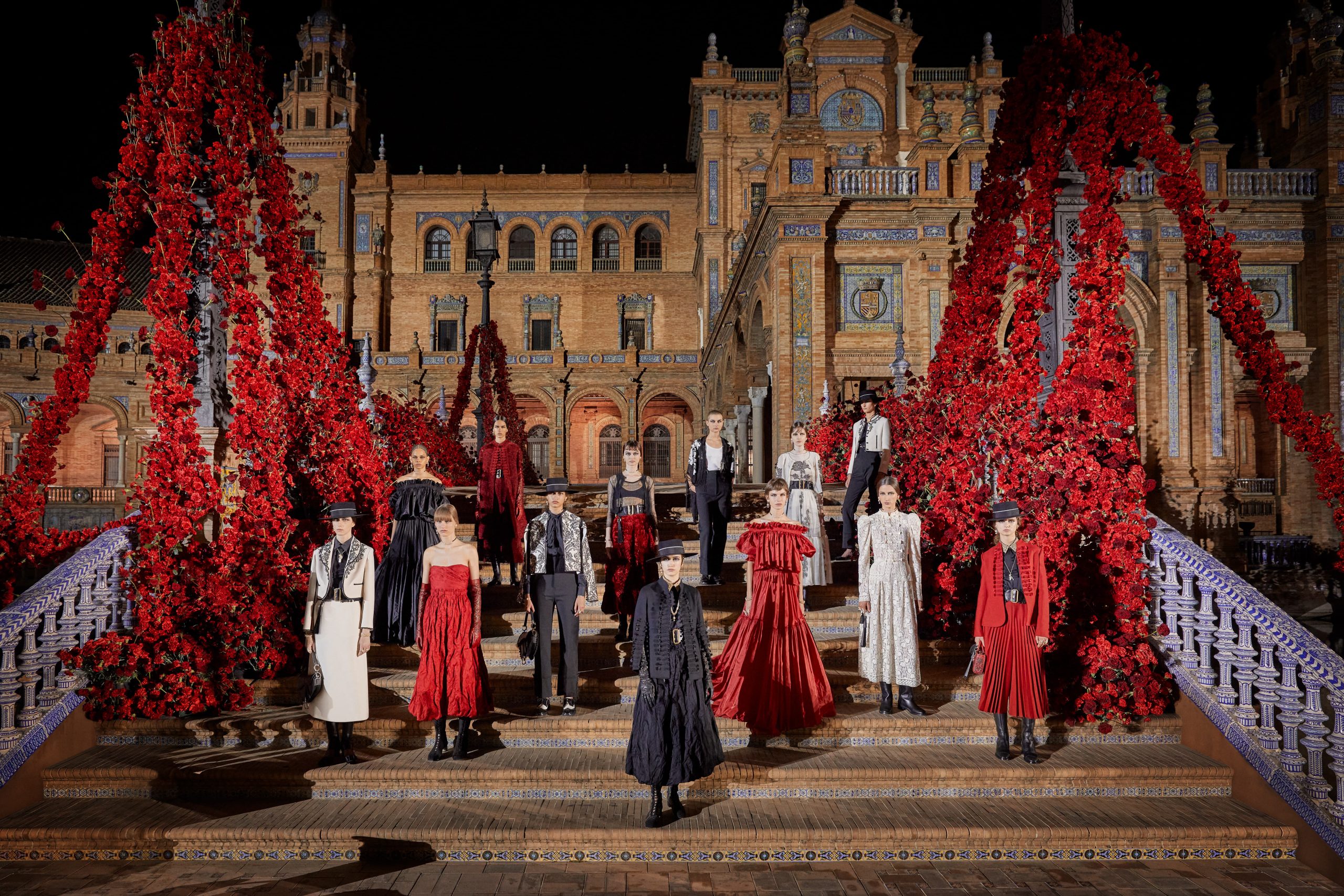
While the cultural reference is new for Chiuri, and the character she’s created here has a distinct persona, her presence of powerful and elegant femininity is not. If the designer has been accused of being repetitive it’s because her commitment to embodying her idea of an empowered woman is so strong; she consistently brings this vision to life. She’s done it again here with one of the sharpest and most powerful iterations of this vision we’ve seen yet.
